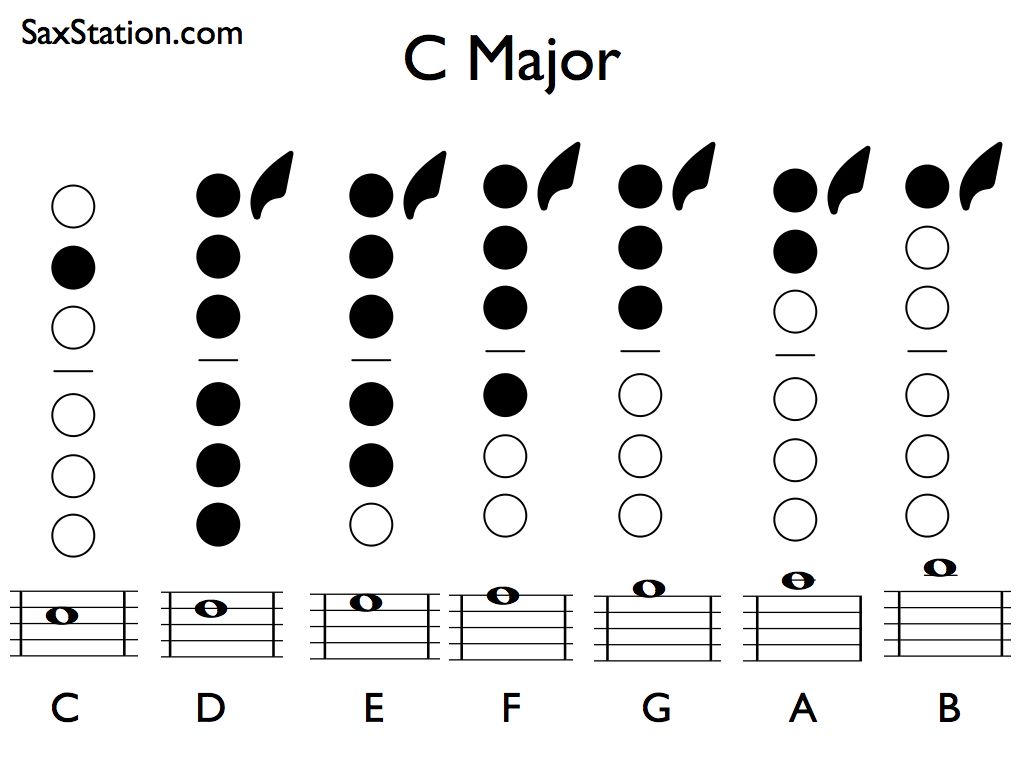I have also learned several different notes so far on the saxophone. At first it was difficult for me to read treble clef, a certain notation music, because I read the bass clef when I play trombone. After a bit of memorizing, I am now able to recognize which note corresponds to which location on the clef.
When I was able to memorize the notes, I tried to put the fingerings to them. It took a while, but I can now play the seven basic notes: A, B, C, D, E, F, and G. They don't sound the best right now, but over the next few weeks I will work on my intonation in order to get a better sound.
Over the next few weeks I will also learn to play flat notes, which will complete the set notes I will need to know in order to play marching band music. One of the differences between saxophone and trombone is that in order to play higher notes on a saxophone, you have the same fingering and you only have to add one key. I think that this will be helpful for me in the upcoming weeks as I attempt to master the saxophone, because it will be easier for me to remember each note.

Clear and detailed post. I liked the addition of the picture for a visual of what you're talking about. It is clear there is more to it than I first thought. For a non-musician like myself, you explain what you are learning well. In future posts, let's look at how to make your writing voice come alive. I'll show you some tips in class to create voice.
ReplyDeleteAwesome that you picked to learn the saxophone! What you've talked about sounds very similar to what I was like when I first started on it, even though the change that I experienced wasn't as big as yours (with the whole embouchure thing and changing clefs). I hope that you are able to accomplish your goal, and grow as a musician.
ReplyDelete